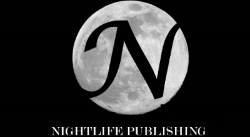Angry White Men (AWM) by Michael Kimmel explores variations on the concept of aggrieved entitlement. According to Kimmel’s theory, when an individual or group expects certain privileges based on their status and reality does not conform to those expectations, a backlash can occur.
Aggrieved entitlement is used to explain a variety of social phenomenon in modern America including the upsurge in nationalism, hate radio, men’s rights groups, domestic terrorism, suicides, and white supremacy groups of all sizes. The common thread in all these trends comes from the demographics of the individuals engaged in these activities. As the title suggests, aggrieved entitlement is by and large the exclusive affliction of angry white men marginalized by multiculturalism, feminism, and gay liberation.
The book was written in 2013, when the Trumpocalypse was inconceivable as a realistic option for the country. AWM focuses on the conditions that gave rise to Trumpzilla, but it doesn’t speak directly to his corrosive impact. It also only hints at the underlying sexual frustration and insecurity I believe is at the heart of racism, misogyny, anti-Semitism and anti-gay bias. It does provide useful insight into an influential but warped strata of society, especially when read in conjunction with Carol Anderson’s White Rage and Aaron James’s Assholes.







